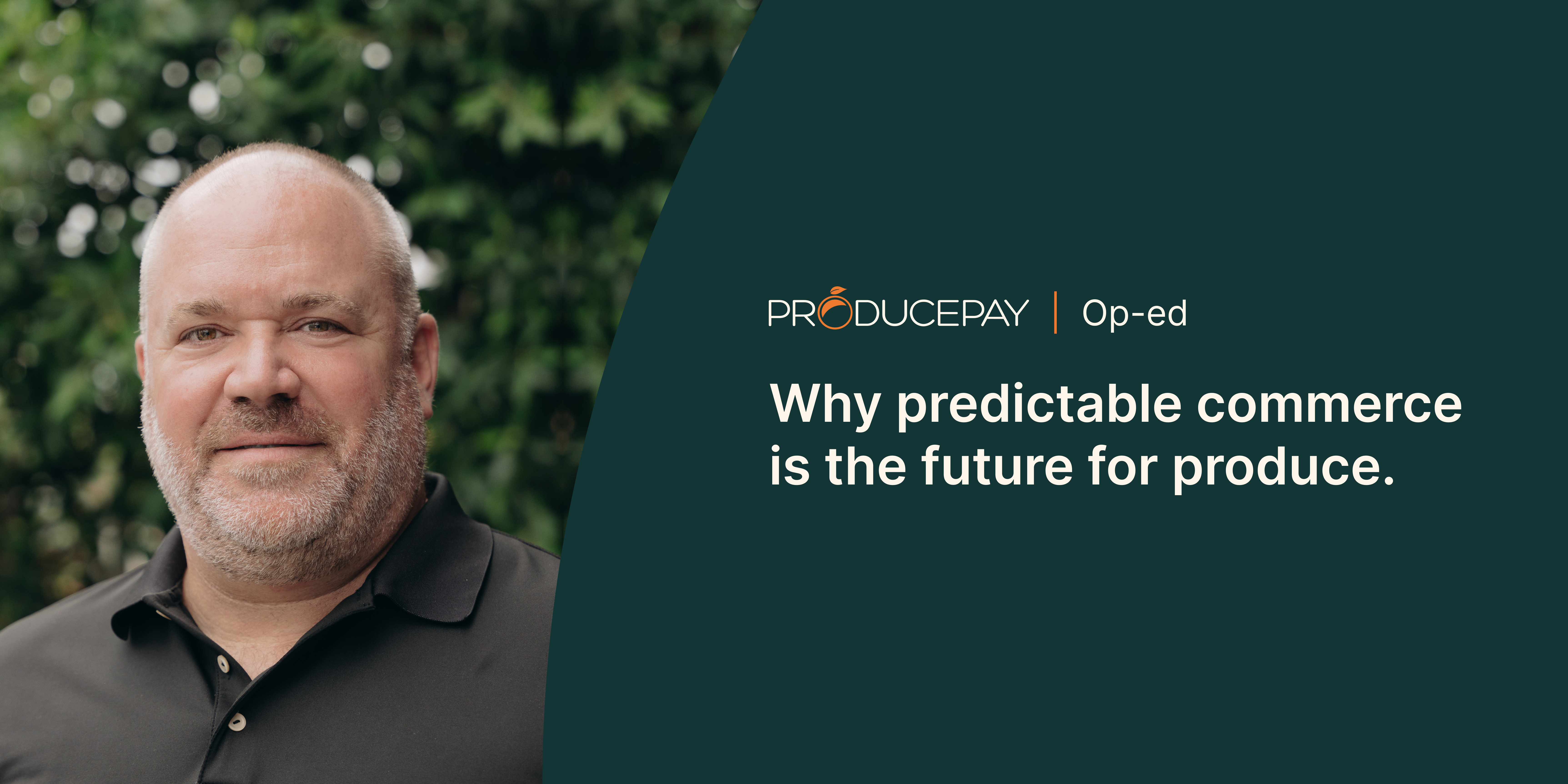
Why Predictable Commerce is the Future for Produce
By Patrick McCullough, ProducePay CEO.
Last year, we launched a transformative Table Grape Predictable Commerce Program in partnership with Four Star Fruit. For the first time ever in the fresh produce industry, growers, marketers, and retailers could thrive in a predictable commercial environment, while providing families with a year-round supply of their favorite produce at stable prices.
The initial program exceeded our expectations. Originally envisioned as a proof of concept, we successfully sourced 430,000 cases of Mexican table grapes during the 2023 season—around 2% of Sonora’s total volume. Moreover, when Hurricane Hillary damaged nearly 25 million boxes of Californian table grapes, we secured volume from Peru and Chile, bridging the supply gap and ensuring consistent supply for retailers. Leveraging our network in Latin America, we helped Four Star Fruit to negotiate with over two dozen verified growers.
We built on the foundations of last year and expanded the program 10X in 2024. This year alone, we hosted our first-ever Table Grape Summit, launched our Visibility solution—crucial for quality control, tracking, and the well-functioning of our Predictable Commerce Programs—and secured 4 million cases of Sonoran table grapes in partnership with leading Mexican growers. We accomplished all of this despite the grape industry experiencing one of its most volatile years to date.
The inevitable unpredictable nature of our industry
This year’s table grape seasons faced numerous challenges and fluctuations. We started 2024 with a difficult Peruvian season, as El Niño caused one of the hottest winters in their history, directly impacting the harvest. This was further complicated by the drought in the Panama Canal, making it even more difficult for Peruvian produce to reach the East Coast.
Then, we experienced some calm with a successful Chilean season. Although delayed by several weeks, Chilean growers substantially increased their exports and market share in the US compared to 2023. However, the overlap with the Mexican season caused pricing volatility. Chilean grapes stayed in the market for 3-4 weeks too long, leading to price drops and a delayed switch to Mexican grapes, complicating the positioning for Sonoran growers.
Despite a 35% year-on-year increase in Mexican export volume to the US during the first week of June, the quality of the produce received mixed reviews. The reason? Mexico, like the US and many other countries, is facing a labor shortage, making it more difficult and expensive for growers to harvest.
We’ve said it before: fresh produce is the most volatile commodity in the world. Over the past six months, we’ve experienced firsthand the effects of extreme weather events, price volatility, and labor issues. The market won’t be able to sustain this unpredictability for much longer, especially as these events become more frequent and impactful.
Proving the model’s effectiveness: the transformative power of predictability
More than a month has passed since the start of the Sonoran grape season, and during those weeks, we have shipped over 50% of the 4 million cases secured. This means retailers will continue to receive grapes until mid-July. For the industry, this translates to:
- Retailers gaining loyal customers with reliable high-quality grapes at stable prices.
- Marketers benefiting not only from the Californian season but also adding value by growing their volume and business through expanding their network to Latin America.
- Growers being certain of selling their produce, knowing who it will be sold to, at what price, and having stability in price and income throughout the season.
But that’s not all. Consider the amount of food waste avoided by this program. In 2023 alone, we saved nearly 400 tons of produce. Imagine what we could achieve this year with Mexico!
This year’s challenges have been many and varied. However, for growers, marketers, and distributors who participated in our Predictable Commerce Program, volatility, unpredictability, and uncertainty were greatly reduced compared to what our partners would have been exposed to in the traditional fragmented and speculative market.
Predictable Commerce is much more than pricing, volume, and shipments. Predictable Commerce ensures that all stakeholders share risks and burdens, acting in the best interest of the entire supply chain. Volatility will continue to increase, but as long as we, as an industry, can better communicate and continue to uphold best practices, with the aim of reducing volatility and speculation, our businesses have the opportunity to grow.
Let’s keep looking for a better way to grow!
An esteemed global business leader, ProducePay CEO, Patrick McCullough, brings to his role more than 25 years of corporate experience and deep expertise in international business development, structuring and joint ventures from leadership positions held at startups and Fortune 500 companies such as Ford Motor Company, Berkshire Hathaway and Just Energy. Prior to becoming CEO at ProducePay, he was a board member for two years, playing a vital role in ProducePay’s capital raising and more than quadrupling the platform’s gross merchandise value to almost $4 billion during that period.

